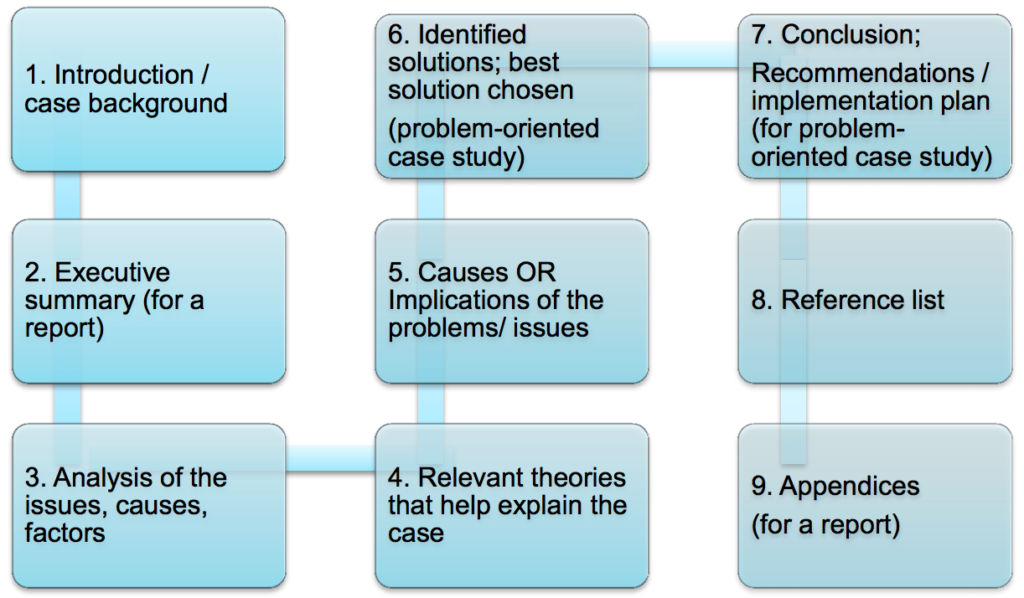Case studies can be a small assignment completed in a week or a large one that spans a semester. Often more than one scenario is provided with associated prompts for students to respond to. Instructions and assignment requirements (e.g. the length of students’ responses, where and when to submit the case study report, etc.) should also be provided.
Advantages
Case study assignments help students
- engage in figuring out principles by abstracting from examples
- understand the perspectives of case study characters
- develop their skills in: problem solving, analytical tools (quantitative and/or qualitative), decision-making in complex situations, and coping with ambiguities
Guidelines
The case should provide sufficient information for students to figure out solutions and identify how to apply the solutions in similar situations. Depending on the course objectives, the instructor may encourage students to follow a systematic approach to their analysis:
- What is the issue?
- What is the goal of the analysis?
- What is the context of the problem?
- What key facts should be considered?
- What alternatives are available to the decision-maker?
- What would you recommend – and why?
(Source: University of Buffalo’s Center for Teaching & Learning).
Examples
Some examples of general instructions
- Example 1 (FSHN 445: Childhood Anthropometric & Dietary Assessment Field Techniques): In this assignment students are presented with 5 scenarios they might encounter in the health field and are asked to provide strategies for handling them. Case studies, Student Answer Sheet
- Example 2 (FSHN 457: Culture and Child Health in the Pacific): In this assignment students are presented with a short case study then asked to develop an intervention solution that includes a presentation and informational flyer. Case Study Description and Assignment Details
- Example 3: CHEM 643-Intermediary Metabolism case study (Assignment description and rubrics for evaluating case study PBL problems)
- Example 4: Bert Kimura describes how he uses case studies in his online synchronous courses
Resources from Bert Kimura:
Structure
The length of students’ responses to case study prompts will vary.
Long responses (1 page +) tend to be reported as a complete essay (with an introduction, body sections, and a conclusion).

Evaluation Rubrics
Students’ responses to the case study prompts can be at least one page long and they can be qualitative or both quantitative and qualitative. To be clear and fair in grading this type of assignment, a rubric is strongly recommended. See examples below:
Rubric 1: Report Rubric (general reference)
Rubric 2: Building your own Canoe and Paddling with Healthy Children (Example 2, FSHN 457)
